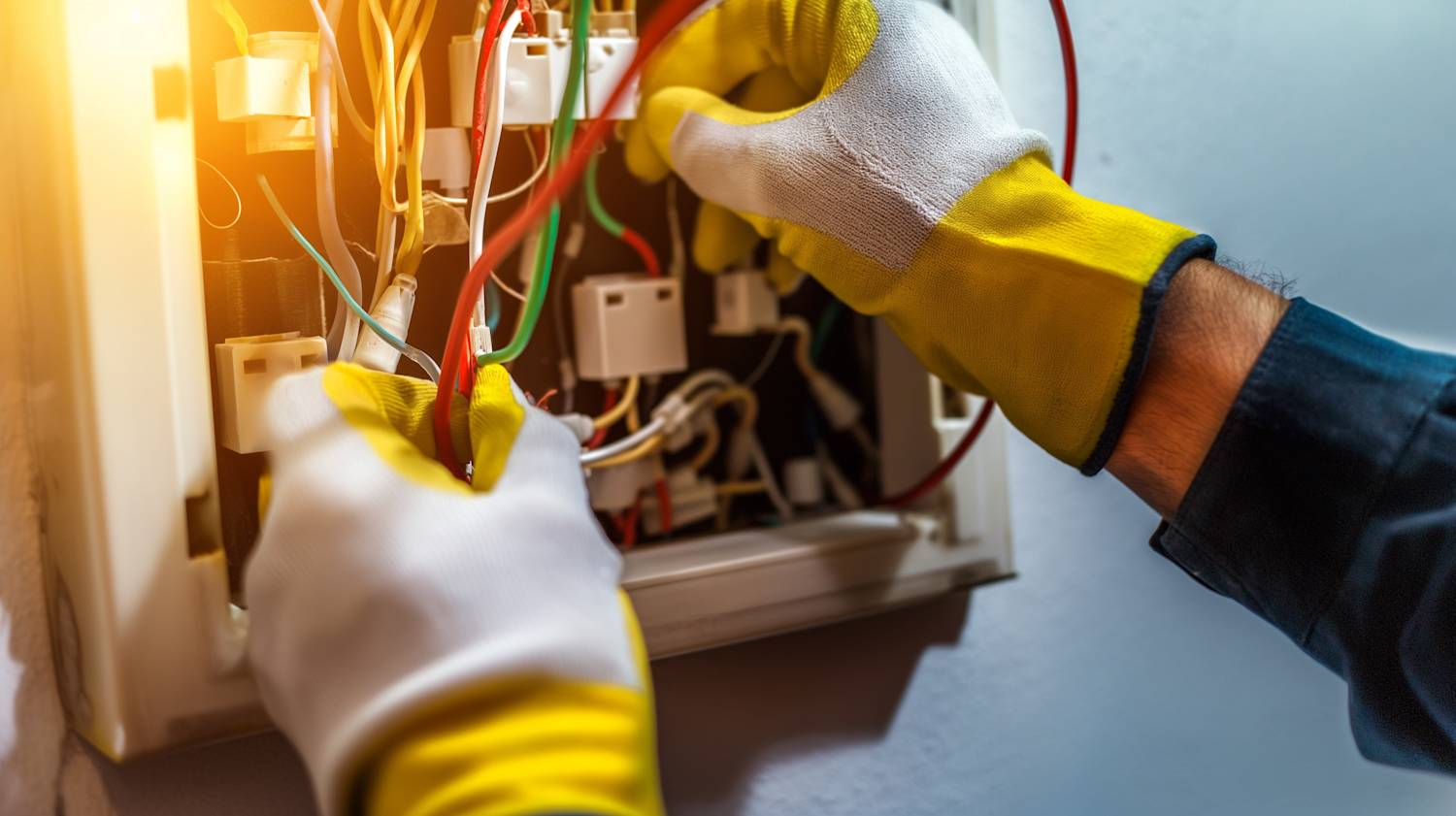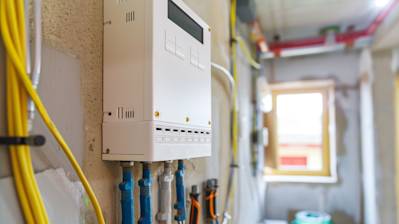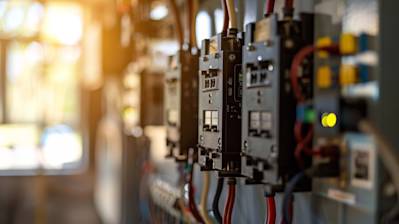Understanding the intricacies of electrical systems can be quite a task, particularly items like the neutral wire. However, anyone looking to engage in DIY electrical projects, or those simply interested in how their domestic or industrial electrical systems operate, should have a basic understanding of this important component. If you're wondering, "what does the neutral wire do," you've come to the right place. This article will delve into the functions, significance, and safety aspects related to the neutral wire within an electrical circuit.
Understanding the Neutral Wire
The neutral wire, often recognized for its white or light colors, plays a pivotal role in the management of electrical power within a circuit. It acts as a pathway, carrying the current back to the source once it has passed through the load (like a light bulb or an appliance). This seemingly straightforward function is vital for the efficient functioning of your electrical systems, and for maintaining safety within your home or business.
The Role of the Neutral Wire in an Electric Circuit
In a typical electric circuit, the current flows from the hot wire, through the load (like a light bulb or appliance that uses the electricity), and then returns through the neutral wire to the supply source. Here are essential points to note:
- The neutral wire provides a return path for the current, allowing the circuit to be completed.
- It also serves as a grounding wire in case of a short circuit or electrical fault.
- A proper connection of the neutral wire is necessary for the proper functioning of electrical devices and safety.
The Significance of the Neutral Wire
The neutral wire holds immense significance in the operation and safety of electrical systems. It keeps electrical systems grounded and prevents the occurrence of electrical shocks or fires due to excess voltage. In the absence of a neutral wire:
- The circuit may remain incomplete, leading to ineffective usage of electricity.
- There could be an increased risk of electrical shocks, electrical fire, and short circuiting.
Neutral Wire in a Three-Phase System
In a three-phase system, commonly used for high-power industrial electrical systems, the neutral wire takes on a slightly different role. While it still provides a path for returning current, it's particularly essential for managing the balance between the three different phases. It helps maintain voltage stability, especially when the loads aren't balanced across the three phases. Without a neutral wire, voltage imbalance in a three-phase system could severely damage sensitive electronic equipment.
Safety Aspects Related to the Neutral Wire
Appropriate handling and maintenance of neutral wires are integral to ensuring the safety of your electrical installations. Proper functioning of the neutral wire often prevents electrical accidents. It's crucial to remember:
- The neutral wire should always be grounded to avoid a buildup of voltage that could be hazardous.
- The incorrect installation of a neutral wire can lead to sparking, overheating, or potential electrical fires.
- Always hire a trained electrician for installation or repair.
Keeping Your Neutral Wire in Check
Regular inspection and maintenance are key to the safety and longevity of your electrical systems. Always ensure your neutral wires are properly installed and grounded, and have a professional conduct regular safety checks to prevent potential electrical hazards.
The neutral wire is a vital component of any electrical circuit. It enables the safe and efficient use of electricity, preventing risks associated with voltages spikes, and maintains electrical safety. Despite the complex language that often surrounds electrical work, a grasp of elements like the neutral wire goes a long way in ensuring the safety and efficiency of your home or business's electrical installations.
Frequently Asked Questions: Understanding the Role of the Neutral Wire
What exactly is the neutral wire in an electrical system?
The neutral wire, often colored white in the United States, is one of the pivotal components of an electrical system. In alternating current (AC) electrical systems, the neutral wire serves as a pathway that completes the circuit, allowing the electricity to return safely to the source. It plays a major role in maintaining the system’s safety and efficiency.
Why is the neutral wire called 'neutral'?
The term "neutral" refers to the wire's function in an electrical system. This wire carries the unbalanced current back to the source, connecting directly to the earth or ground. Because it does not carry a charge under usual conditions, and it essentially acts as the balancing factor in your electrical system, it is termed "neutral".
Is the neutral wire crucial for any electrical setup?
Yes, the neutral wire is a vital component of any electrical system, serving as the return path for the circuit. Without the neutral wire, electrical appliances might not function properly and could even pose a risk or safety hazard.
Does the neutral wire carry electricity?
Yes, the neutral wire carries electricity. In a properly functioning circuit, the neutral wire provides the return path for the current to go back to the power source once it has flowed through the electrical device.
Can the neutral wire shock you?
Under normal circumstances, the neutral wire should not pose a risk of electric shock because it is grounded and supposed to be at zero volts. However, if the grounding is faulty or the current in the circuit is unbalanced, a neutral wire may carry voltage and could potentially give you a shock. That's why it's important to always follow appropriate safety procedures when working with electrical systems.
What is the relation between the neutral wire and the ground wire?
The neutral and ground wires serve different but related roles. The neutral wire carries the return current and completes the circuit, while the ground wire provides a safe pathway for electrical energy in the case of a fault in the system. Under normal circumstances, the ground wire carries no current. In most systems, the neutral wire is connected to the ground wire at the circuit breaker box to ensure safety.
Is the neutral wire always white?
In the U.S., the National Electrical Code requires the neutral wire to be white, or gray in some instances. But the conventions can vary in different countries and for more complex wiring systems. So, while the neutral wire is often white, this is not universally so, and you should always check with a professional or consult a guide before interacting with wiring systems.
What happens if the neutral wire is not connected?
If the neutral wire of a circuit is not connected, problems can arise, including malfunction of electrical devices or even possible electric shocks. A missing neutral connection would break the circuit, preventing the current from returning to its source and leaving the voltage with nowhere to go. This can lead to unpredictable and increased voltage on appliances, potentially causing them to fail, or posing a safety risk.
How does the neutral wire contribute to the working of home appliances?
The neutral wire in your home serves as the return path for electric current after it has passed through your appliances. It enables the circuit to be completed, thereby allowing the continued flow of electricity that lets your appliances work properly. Without a functioning neutral wire, your home appliances would not be able to operate effectively.
Pros and Cons of What a Neutral Wire Does
Pros
Safety
- The neutral wire significantly contributes to electrical safety. In any electrical system, a neutral wire serves as a pathway for electric currents to travel back to the source. This makes the system less prone to short circuits and accidents.
- Another aspect of safety that the neutral wire provides is that it helps dissipate any stray or unwanted electricity within the system. This is crucial in preventing electric shocks, which are a major hazard in any electrical setup.
Stability
- In a 3-wire system, consisting of a hot wire, a neutral wire and a ground wire, the neutral wire is essential in maintaining system stability. Any imbalance in the power supply could potentially damage electrical appliances or cause power surges. The neutral wire helps maintain a balanced electrical load, ensuring system stability.
Zero Voltage
- Another advantage of what a neutral wire does is that it provides a zero voltage level. The voltage in a neutral wire should ideally be zero or close to zero. This is important for the functioning of electrical devices, which often rely on the neutrality of the neutral wire.
Cons
Complexity
- While the inclusion of a neutral wire can enhance the safety and stability of an electrical system, it can also enhance its complexity. The additional wire requires more work for installation and maintenance.
- Systems with a neutral wire can also be more difficult to troubleshoot in the event of a fault. This is due to the increased complexity associated with having an additional neutral wire.
Mistaken Ground
- There is a risk associated with the neutral wire, particularly in older buildings, where the neutral wire may have been used as the ground wire. This is a dangerous misuse that could result in electrical shock or fire.
Potential Damage
- If not properly installed or maintained, a neutral wire can become damaged, causing numerous electrical problems. These can range from minor issues such as flickering lights and reduced appliance performance to serious problems such as electrical fires.
While the neutral wire plays an integral role in the safety and stability of an electrical system, it also comes with its own set of disadvantages. This includes added complexity to the electrical system and the risk of misuse or damage. The potential benefits and drawbacks should therefore be carefully considered when designing, installing, and maintaining any electrical system.
Summary
Overall, the main purpose of the neutral wire is to act as a pathway that allows the current to return back after being used by the appliance. So, "what does the neutral wire do?" It ensures the smooth functioning of all your home appliances by providing a safe path for the current to travel back to the power source. Its safety feature can’t be emphasized enough as having a secure return path for electrical current reduces any risks of electrical faults or fires.
Looking at it from another angle, it's pretty clear that the neutral wire is instrumental in completing the electrical circuit in homes and buildings. Its primary responsibility is to conduct electricity away from your appliances and back to the power source. Through this, it ensures a steady and balanced flow of electricity, mitigating any dangers that come with electrical imbalance.
Meanwhile, it's also important to remember that while the neutral wire may appear non-intimidating due to its zero voltage potential, we should not underestimate the dangers it can pose if handled incorrectly. Misconfigured or improperly handled neutral wires could lead to electrical faults or even devastating fires. Therefore, although the neutral wire performs such a critical function in a hassle-free manner, it should be treated with the same precautions as any other electrical wire.
About Sagan Electric
Welcome to Sagan Electric of Sacramento, CA! We are your go-to experts for all things electrical. From commercial projects to residential services, our professional and certified electricians are always ready to give you a top-quality, hassle-free experience. With a stellar reputation in the Sacramento area, Sagan Electric is synonymous with reliability, expertise, and customer satisfaction. Your safety is our top priority, and our team is driven to ensure you receive the best service possible. Join our community of happy customers today!
Tags: electricity, electrical wiring, neutral wire,








